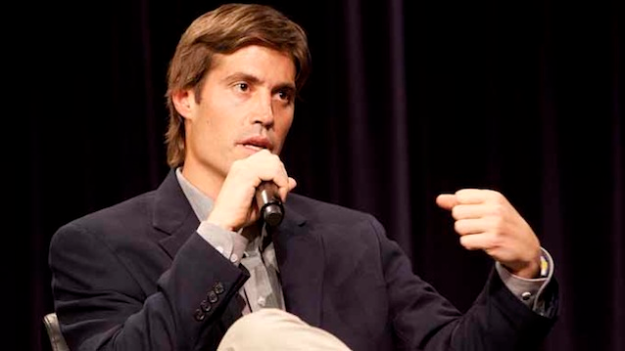Previously published at WGBHNews.org.
The horrifying execution of journalist James Foley raises an uncomfortable if familiar question: Is there anything to be gained by watching the video of his beheading at the hands of an ISIS terrorist?
It’s a question that I explored 12 years ago, when Wall Street Journal reporter Daniel Pearl was similarly murdered. I searched for the video online and found it at a website whose sick operators presented such fare for the entertainment of their disturbed viewers. I shared it with my friends at The Boston Phoenix, who — to my surprise — published several small black-and-white stills of Pearl’s beheading and provided a link to the full video. “This is the single most gruesome, horrible, despicable, and horrifying thing I’ve ever seen,” the Phoenix’s outraged publisher, Stephen Mindich, wrote in an accompanying editorial.
The Phoenix’s actions created a national controversy. I defended Mindich and editor Peter Kadzis, first in the Phoenix, later in Nieman Reports. (At the time I had left the paper to write my first book, though I continued to contribute freelance pieces. My departure turned out to be temporary. And Kadzis, my editor then, is also my editor now: he is the senior editor of WGBH News.) I wrote in the Nieman piece:
Daniel Pearl didn’t seek martyrdom, but martyrdom found him. The three-and-a-half-minute video shows us the true face of evil, an evil that manifested itself unambiguously last September 11…. We turn away from such evil at our peril.
I stand by what I wrote then, but I haven’t watched the execution of Jim Foley. In contrast to the Daniel Pearl footage, the Foley video is bright and clear, in high definition. I’ve watched a bit of it, listened to him speak while kneeling in the desert; but that was all I could handle.
Boston Globe columnist Jeff Jacoby takes a different view, writing, “The intrepid and compassionate reporter from New Hampshire didn’t travel to Syria to sanitize and downplay the horror occurring there. He went to document and expose it.”
I don’t disagree. But it should be a matter of choice. Gawker, among the first media outlets to post a link to the video, made sure its readers knew that what they would see if they clicked was “extremely disturbing.” By contrast, the New York Post and the Daily News published front-page images of Foley (I’ve linked to a Washington Post story, not the actual images) just before his beheading — in the New York Post’s case, barely a nanosecond before.
It’s a fine line, but I’d say Gawker was on the right side of it, and the New York tabloids were not.
At the time of his capture, Foley was freelancing for GlobalPost, the Boston-based international news organization. GlobalPost co-founder and chief executive Phil Balboni, in a tribute published in the Globe, wrote:
For those of us who knew Jim, the road ahead will be particularly long and trying. As a lifelong journalist, the path forward for me will be rooted in a renewed and profound respect for a profession that for Jim was not a job, but a calling.
And here is an interview with GlobalPost co-founder Charles Sennott, talking about Foley on WGBH Radio (89.7 FM).
We’ve learned a lot since the execution of Daniel Pearl. One of the things we’ve learned is that bearing witness does not necessarily lead to a good result. Years of war in Iraq and Afghanistan have not created a safer world.
Do we have a right to view the James Foley video? Of course. Twitter, a private company that has become a virtual public utility, is heading down a dangerous road by banning images from the video. Should we watch the video as a way of witnessing unspeakable evil, as Jeff Jacoby argues? That, I would suggest, should be up to each of us.
Above all, we should honor the bravery and sacrifice of journalists like Daniel Pearl and James Foley, who take risks most of us can scarcely imagine. Let’s keep the Foley family in our thoughts, and celebrate the safe return of Peter Theo Curtis. And let’s send offer whatever good thoughts we can for Steven Sotloff, a fellow hostage of Foley’s who was threatened with death last week.


